-
 bitcoin
bitcoin $114779.865156 USD
2.30% -
 ethereum
ethereum $4226.519789 USD
2.39% -
 tether
tether $1.000545 USD
0.04% -
 xrp
xrp $2.890223 USD
0.92% -
 bnb
bnb $1030.029301 USD
2.95% -
 solana
solana $212.824944 USD
1.69% -
 usd-coin
usd-coin $0.999757 USD
0.01% -
 dogecoin
dogecoin $0.234961 USD
-0.27% -
 tron
tron $0.337174 USD
0.42% -
 cardano
cardano $0.804783 USD
0.09% -
 hyperliquid
hyperliquid $45.748770 USD
-2.85% -
 chainlink
chainlink $21.699170 USD
0.82% -
 ethena-usde
ethena-usde $1.001452 USD
0.08% -
 avalanche
avalanche $30.237800 USD
1.14% -
 stellar
stellar $0.372604 USD
1.52%
What is the best GPU for mining profitability?
The RTX 4090 leads in GPU mining performance with 121 MH/s on Ethereum Classic, but power efficiency and electricity costs are crucial for sustained profitability.
Aug 07, 2025 at 03:35 pm
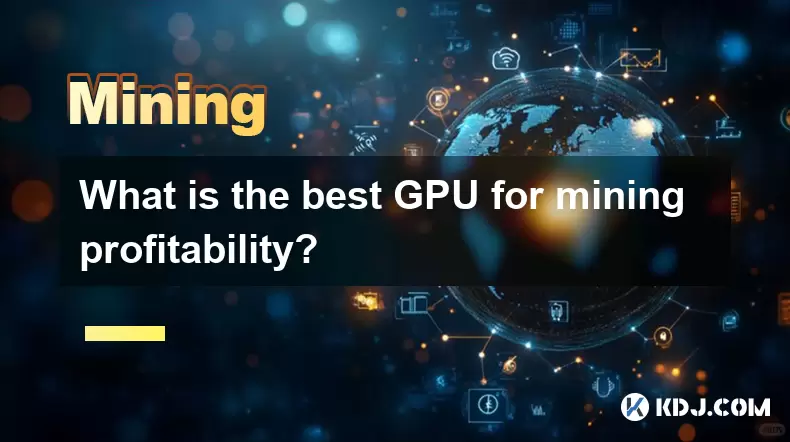
Understanding GPU Mining and Profitability Metrics
GPU mining involves using a graphics processing unit to solve complex cryptographic equations required to validate transactions on certain blockchain networks, particularly those using proof-of-work (PoW) consensus mechanisms. The profitability of a GPU depends on multiple factors including hash rate, power consumption, initial cost, and the current market value of the mined cryptocurrency. To determine the best GPU for mining profitability, one must analyze the cost-to-performance ratio, which combines these metrics into a comprehensive assessment. Miners often rely on calculators such as WhatToMine or CryptoCompare to estimate daily earnings based on real-time data.
Top Contenders in GPU Mining Performance
Several GPUs dominate the mining landscape due to their high hashrates and energy efficiency. The NVIDIA GeForce RTX 4090 leads in raw performance, delivering up to 121 MH/s on Ethereum Classic (ETC) with optimized drivers. Despite its high price tag, its hashrate per watt is among the best in the market. The AMD Radeon RX 7900 XTX follows closely, offering strong performance on memory-intensive algorithms like KawPow and Autolykos. It achieves around 62 MH/s on Ethereum Classic and consumes less power than older AMD models. Another popular option is the NVIDIA RTX 3060 Ti, which is highly efficient due to its locked memory controller being bypassed via modded BIOS, enabling full mining potential on various DAG-based coins.
- RTX 4090: Exceptional hashrate, high power draw (~450W)
- RX 7900 XTX: Balanced performance, supports multiple algorithms
- RTX 3060 Ti: Cost-effective, widely available, low entry price
- RX 6700 XT: Excellent for ETC and Ravencoin, power-efficient
Each of these GPUs performs differently depending on the coin being mined, making algorithm compatibility a critical factor.
Power Efficiency and Electricity Costs
A key determinant in mining profitability is power efficiency, measured in MH/s per watt. Even a high-performing GPU can become unprofitable if it consumes excessive electricity, especially in regions with high electricity rates. For example, the RX 6700 XT draws about 115W while achieving 36 MH/s on Ethereum Classic, resulting in a favorable 0.31 MH/s per watt. In contrast, the RTX 4090, while powerful, uses nearly 450W, requiring a careful evaluation of local electricity costs. Miners must calculate daily power cost using the formula:
- Daily Power Cost = (GPU Power Draw in kW) × (Hours Mined) × (Electricity Rate per kWh)
If electricity costs exceed mining revenue, the operation becomes unprofitable. Therefore, location-based energy pricing plays a pivotal role in selecting the optimal GPU.
Setting Up Your Mining Rig: Step-by-Step Configuration
To maximize profitability, proper setup is essential. Begin by selecting a motherboard that supports multiple PCIe slots, such as the ASUS B250 Mining Expert, capable of handling up to 19 GPUs. Use PCIe risers to connect each GPU to the motherboard. Ensure your power supply unit (PSU) delivers sufficient wattage with headroom—e.g., a 1600W 80+ Gold PSU for six mid-range GPUs.
- Install minimal OS like HiveOS or SimpleMining OS for stability and remote management
- Flash GPU BIOS (if applicable) to unlock memory bandwidth or reduce power limits
- Download mining software such as T-Rex Miner, GMiner, or NBMiner
- Configure the miner with your wallet address, pool URL, and worker name
Example configuration for T-Rex Miner:
t-rex -o stratum+tcp://etc-us-east1.nanopool.org:19999 -u YOUR_WALLET_ADDRESS -p x -w WORKER_NAMEEnsure GPU drivers are updated but avoid the latest versions if they include mining restrictions. Use NVIDIA 472.12 or AMD Adrenalin 22.5.1 for unlocked performance.
Monitoring and Optimizing Mining Output
After setup, continuous monitoring ensures sustained profitability. Use tools like MSI Afterburner or AMD Software: Adrenalin Edition to adjust core clock, memory clock, and voltage. For the RX 6700 XT, a stable overclock might include:
- GPU Clock: +100 MHz
- Memory Clock: +800 MHz
- Voltage: 950 mV (undervolt for efficiency)
Monitor hashrate stability and temperature—ideal GPU temps should remain below 70°C under load. High temperatures reduce lifespan and efficiency. Use fan curves to balance noise and cooling. Mining pools like Nanopool or 2Miners provide dashboards to track earnings, hashrate, and uptime. Enable email or Telegram alerts for downtime detection.
Market Volatility and Coin Selection Strategy
Profitability fluctuates with cryptocurrency prices and network difficulty. A GPU that mines Ethereum Classic today may yield higher returns mining Ravencoin (RVN) tomorrow. Use auto-switching miners like Awesome Miner to dynamically switch to the most profitable coin based on real-time data. Alternatively, manually check WhatToMine.com, input your GPU model, power cost, and electricity rate to compare estimated earnings across coins. Some miners prefer stability and stick to established coins, while others chase short-term gains from newly launched or low-difficulty chains.
Frequently Asked Questions
Can I use gaming GPUs for mining without damaging them?Yes, but prolonged full-load operation increases wear. Ensure adequate cooling, dust-free environment, and stable power delivery. Most modern GPUs can endure mining for 1–2 years with proper maintenance.
Do NVIDIA GPUs still support mining after driver restrictions?NVIDIA restricted ETH mining via driver updates, but other algorithms (e.g., KawPow, Autolykos) remain unaffected. Use older drivers or mine non-Ethash coins to bypass limitations.
Is it better to mine in a pool or solo?Mining solo requires immense hashrate and luck to find blocks. Pools offer consistent, smaller payouts. For individual GPU miners, pool mining is the only practical option.
How often should I update mining software?Update when new versions offer performance improvements, algorithm support, or security patches. Avoid updates during active mining sessions to prevent downtime. Check developer changelogs before upgrading.
Disclaimer:info@kdj.com
The information provided is not trading advice. kdj.com does not assume any responsibility for any investments made based on the information provided in this article. Cryptocurrencies are highly volatile and it is highly recommended that you invest with caution after thorough research!
If you believe that the content used on this website infringes your copyright, please contact us immediately (info@kdj.com) and we will delete it promptly.
- ChatGPT, Bitcoin, and $HYPER: Riding the Crypto Wave
- 2025-09-30 16:25:14
- Mutuum Finance (MUTM): Riding the DeFi Wave with Crypto Price Prediction
- 2025-09-30 16:25:14
- XRP ETF Approval Odds Soar: Analyst Predicts $33 Price Surge!
- 2025-09-30 16:30:01
- Keel, Solana, and Sky Stablecoin: Fueling the Future of DeFi
- 2025-09-30 16:45:13
- EcoChain, DePIN Infrastructure, and X1Nodes: Powering the Web4 Revolution
- 2025-09-30 16:30:01
- Pi Network's Institutional Momentum: Leading the Web3 Revolution
- 2025-09-30 16:45:13
Related knowledge
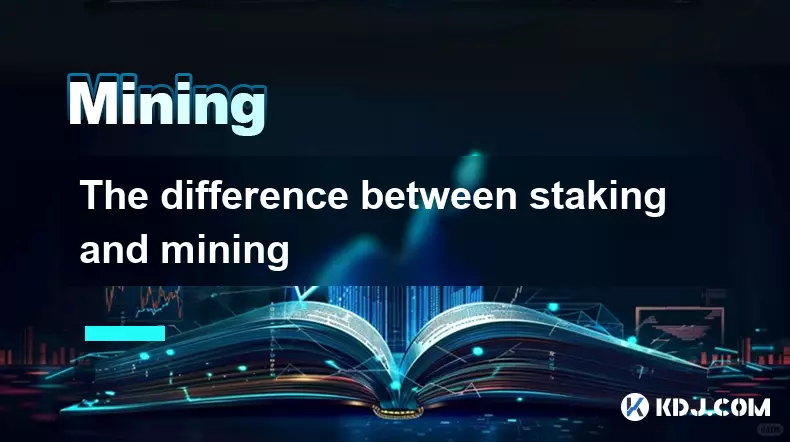
The difference between staking and mining
Sep 24,2025 at 05:18am
Understanding Staking in the Cryptocurrency Ecosystem1. Staking involves holding funds in a cryptocurrency wallet to support the operations of a block...
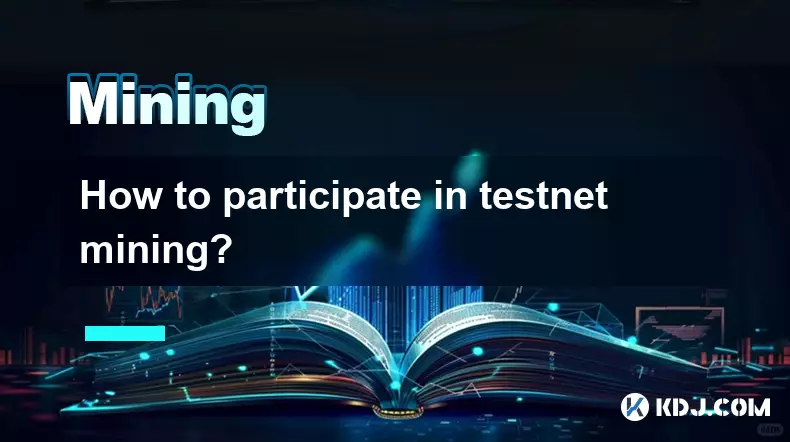
How to participate in testnet mining?
Sep 22,2025 at 09:18am
Understanding Testnet Mining in the Crypto Ecosystem1. Testnet mining is a method used by blockchain developers to simulate real-world conditions on a...

How to dispose of abandoned mining machines?
Sep 19,2025 at 08:19pm
Assessing the Condition of Abandoned Mining Rigs1. Begin by inspecting each mining machine for visible damage, corrosion, or missing components. Machi...

How to identify high-quality mining pools?
Sep 21,2025 at 03:19pm
Reputation and Track Record1. A mining pool’s reputation is built over time through consistent performance and transparency. Pools that have operated ...
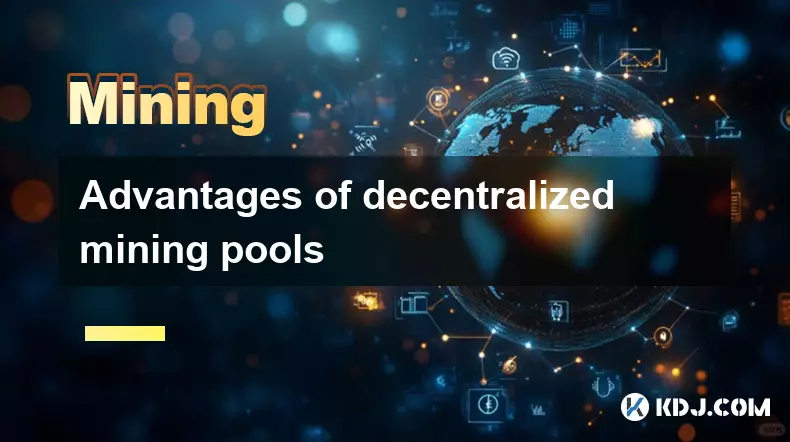
Advantages of decentralized mining pools
Sep 20,2025 at 04:36pm
Enhanced Security and Resistance to Censorship1. Decentralized mining pools operate on blockchain-based smart contracts, eliminating the need for a ce...
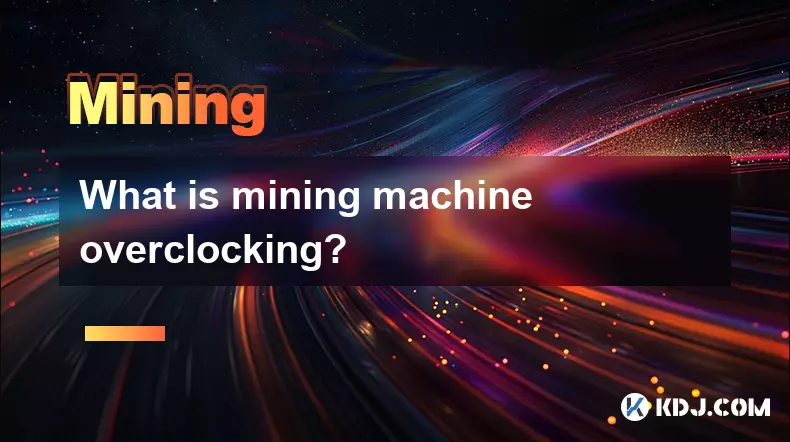
What is mining machine overclocking?
Sep 21,2025 at 07:19pm
Understanding Mining Machine Overclocking1. Mining machine overclocking refers to the process of increasing the operating frequency of a cryptocurrenc...

The difference between staking and mining
Sep 24,2025 at 05:18am
Understanding Staking in the Cryptocurrency Ecosystem1. Staking involves holding funds in a cryptocurrency wallet to support the operations of a block...

How to participate in testnet mining?
Sep 22,2025 at 09:18am
Understanding Testnet Mining in the Crypto Ecosystem1. Testnet mining is a method used by blockchain developers to simulate real-world conditions on a...

How to dispose of abandoned mining machines?
Sep 19,2025 at 08:19pm
Assessing the Condition of Abandoned Mining Rigs1. Begin by inspecting each mining machine for visible damage, corrosion, or missing components. Machi...

How to identify high-quality mining pools?
Sep 21,2025 at 03:19pm
Reputation and Track Record1. A mining pool’s reputation is built over time through consistent performance and transparency. Pools that have operated ...

Advantages of decentralized mining pools
Sep 20,2025 at 04:36pm
Enhanced Security and Resistance to Censorship1. Decentralized mining pools operate on blockchain-based smart contracts, eliminating the need for a ce...

What is mining machine overclocking?
Sep 21,2025 at 07:19pm
Understanding Mining Machine Overclocking1. Mining machine overclocking refers to the process of increasing the operating frequency of a cryptocurrenc...
See all articles










































































